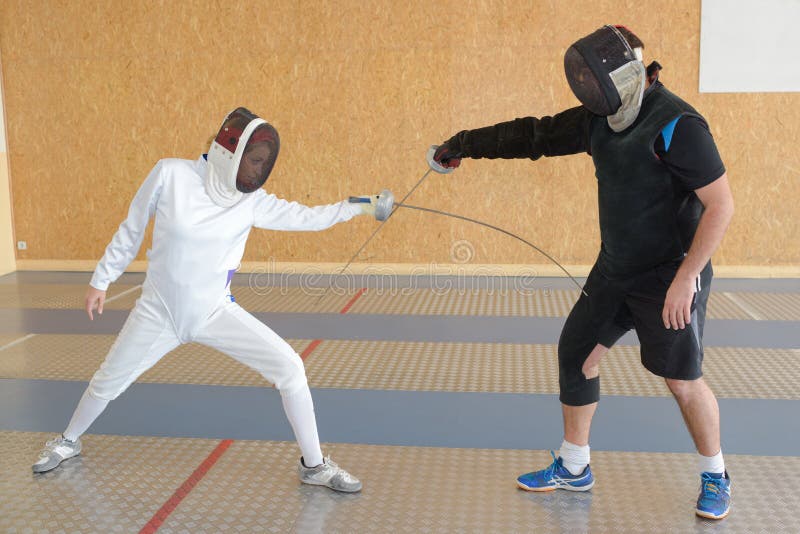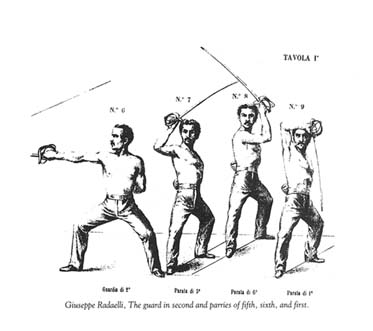Fencing is a sport that requires precision, agility, and quick reflexes. One of the key elements in mastering this sport is having a strong and stable fencing stance. Your stance serves as the foundation for your movements and techniques, making it crucial to get it right. In this blog post, we will delve into the world of fencing stances and provide you with tips and techniques to help you perfect your stance and improve your overall performance.
Understanding the Basics of Fencing Stance
Before we dive into the different types of fencing stances, it is important to understand the basic principles behind a proper fencing stance. The primary goal of a fencing stance is to provide a solid base for your body while allowing for quick and fluid movements. Here are some key points to keep in mind when setting up your fencing stance:
Feet Placement
Your feet should be shoulder-width apart, with one foot slightly ahead of the other. The front foot should be pointing towards your opponent, while the back foot is at a 90-degree angle. This positioning allows for better balance and stability, as well as providing a strong base for lunging and other movements.
Knee Bend
Bending your knees is essential in maintaining a low center of gravity and being able to quickly change directions. Your front knee should be bent at a 90-degree angle, while your back knee should be slightly bent. Avoid locking your knees as it can hinder your movements and make you more susceptible to injuries.
Body Positioning
Your upper body should be leaning slightly forward, with your shoulders relaxed and your arms extended. Keep your head up and your eyes focused on your opponent. This position allows for better reach and control over your weapon.
Mastering the Different Types of Fencing Stances

There are three main types of fencing stances: en garde, advance, and retreat. Each stance has its own purpose and is used in different situations during a match.
En Garde Stance
The en garde stance is the most commonly used stance in fencing. It is the starting position for both fencers at the beginning of a match and is also used during breaks in between points. In this stance, your front foot is pointing towards your opponent, and your back foot is at a 45-degree angle. Your weight should be evenly distributed on both feet, with your knees bent and your upper body leaning slightly forward.
Advance Stance
The advance stance is used when you want to move closer to your opponent. To execute this stance, you need to take a small step forward with your front foot while keeping your back foot in place. This movement allows for quick and controlled advances towards your opponent.
Retreat Stance
On the other hand, the retreat stance is used when you want to create distance between you and your opponent. To perform this stance, you need to take a small step back with your back foot while keeping your front foot in place. This movement allows for quick and controlled retreats from your opponent’s attacks.
The Importance of Proper Footwork in Fencing Stance

In fencing, footwork is just as important as having a strong stance. Your footwork not only helps you move around the fencing strip but also plays a crucial role in executing techniques and defending against your opponent’s attacks. Here are some tips to improve your footwork and enhance your overall fencing stance:
- Practice proper foot placement: As mentioned earlier, your feet play a vital role in maintaining a strong fencing stance. Make sure to practice placing your feet in the correct positions to develop muscle memory and improve your footwork.
- Work on your speed and agility: Fencing requires quick movements and changes in direction. Incorporate drills that focus on improving your speed and agility to help you move around the strip more efficiently.
- Use your toes: Your toes are essential in maintaining balance and stability during a match. Make sure to keep them engaged and use them to pivot and change directions quickly.
Common Mistakes to Avoid in Fencing Stance
As with any sport, there are common mistakes that fencers make when it comes to their stance. These mistakes can hinder your performance and make you more vulnerable to your opponent’s attacks. Here are some of the most common mistakes to avoid in fencing stance:
- Standing too upright: Many fencers tend to stand too upright, which makes them an easy target for their opponents. Remember to keep your upper body slightly leaning forward to maintain a strong and stable stance.
- Not bending your knees enough: As mentioned earlier, bending your knees is crucial in maintaining a low center of gravity and being able to move quickly. Make sure to bend your knees at a 90-degree angle to have better control over your movements.
- Leaning too far forward or backward: Another common mistake is leaning too far in one direction. This not only affects your balance but also makes it difficult to execute techniques properly. Practice keeping your upper body centered and avoid leaning too much in any direction.
Developing Balance and Stability in Your Fencing Stance

Having good balance and stability is essential in fencing. It allows you to move around the strip with ease and execute techniques accurately. Here are some tips to help you develop balance and stability in your fencing stance:
- Strengthen your core: A strong core is crucial in maintaining balance and stability. Incorporate exercises such as planks, Russian twists, and leg lifts into your training routine to strengthen your core muscles.
- Work on your posture: Good posture is key to having good balance. Make sure to keep your shoulders relaxed and your back straight to maintain proper alignment.
- Practice lunging: Lunges are a fundamental movement in fencing and require good balance and stability. Practice lunging from different angles and positions to improve your overall balance.
Tips for Improving Your Fencing Stance Technique

Aside from the basic principles of a proper fencing stance, there are also techniques that you can incorporate to enhance your stance and improve your performance. Here are some tips to help you perfect your fencing stance technique:
- Use your non-dominant hand: In fencing, your non-dominant hand plays an important role in maintaining balance and stability. Make sure to keep it engaged and use it to help with your movements.
- Keep your weapon arm relaxed: Tensing up your weapon arm can hinder your movements and make it difficult to execute techniques. Keep your weapon arm relaxed and only tense it when necessary.
- Visualize your opponent’s attacks: Visualization is a powerful tool in sports. Before a match, visualize your opponent’s attacks and practice defending against them in your mind. This will help you anticipate their moves and be better prepared during the actual match.
How to Maintain a Strong Fencing Stance Throughout a Match

Maintaining a strong fencing stance throughout a match can be challenging, especially when you’re facing a skilled opponent. However, there are strategies that you can use to help you stay in control and maintain a strong stance. Here are some tips to help you maintain a strong fencing stance throughout a match:
- Stay calm and focused: It’s easy to get overwhelmed during a match, but it’s crucial to stay calm and focused. Take deep breaths and focus on your breathing to help you stay centered and in control.
- Be aware of your surroundings: Pay attention to your opponent’s movements and position yourself accordingly. This will help you anticipate their attacks and adjust your stance accordingly.
- Don’t forget to breathe: It may seem like a small thing, but proper breathing is essential in maintaining a strong fencing stance. Make sure to take deep breaths and exhale when executing techniques to help you stay relaxed and focused.
Incorporating Defensive Techniques into Your Fencing Stance
In fencing, having a strong defense is just as important as having a strong offense. Your fencing stance plays a crucial role in defending against your opponent’s attacks. Here are some defensive techniques that you can incorporate into your fencing stance:
- Parrying: Parrying is a technique used to deflect your opponent’s attack using your weapon. To execute this technique, you need to use your weapon arm to block your opponent’s weapon while maintaining a strong fencing stance.
- Counterattacks: A counterattack is an offensive move that is executed immediately after defending against your opponent’s attack. This technique requires quick reflexes and a strong fencing stance to be effective.
- Retreats: As mentioned earlier, the retreat stance is used to create distance between you and your opponent. You can use this technique to avoid your opponent’s attacks and regroup before launching your own attack.
The Role of Body Positioning in Fencing Stance
Aside from footwork and proper stance, body positioning also plays a crucial role in fencing. How you position your body during a match can affect your balance, reach, and overall performance. Here are some key points to keep in mind when it comes to body positioning in fencing stance:
- Keep your upper body centered: As mentioned earlier, keeping your upper body centered is essential in maintaining balance and stability. Avoid leaning too far in any direction and keep your shoulders relaxed.
- Use your hips and shoulders: Your hips and shoulders play a vital role in generating power and speed in your movements. Make sure to engage them and use them to your advantage during a match.
- Be mindful of your distance: Maintaining the right distance between you and your opponent is crucial in fencing. Make sure to adjust your body positioning accordingly to maintain the ideal distance for your attacks.
Advanced Strategies for Perfecting Your Fencing Stance
As you progress in your fencing journey, there are advanced strategies that you can incorporate into your fencing stance to take your skills to the next level. Here are some techniques that you can use to perfect your fencing stance:
- Use feints: A feint is a deceptive move used to distract your opponent and create an opening for an attack. Incorporate feints into your footwork and body positioning to keep your opponent guessing.
- Practice lunging from different angles: Lunging is a fundamental movement in fencing, and being able to execute it from different angles can give you an advantage over your opponent. Practice lunging from different positions to improve your overall technique.
- Work on your timing: Timing is crucial in fencing, and having good timing can make all the difference in a match. Practice your timing by incorporating drills that require you to react quickly to your opponent’s movements.
Conclusion
Mastering the perfect fencing stance takes time, practice, and dedication. It is a crucial element in fencing that can greatly impact your performance. By understanding the basics of fencing stance, mastering different types of stances, and incorporating proper footwork and body positioning, you can improve your overall fencing skills and become a formidable opponent on the strip. Remember to stay focused, keep practicing, and always strive to improve your technique. With these tips and techniques, you’ll be well on your way to mastering the perfect fencing stance.